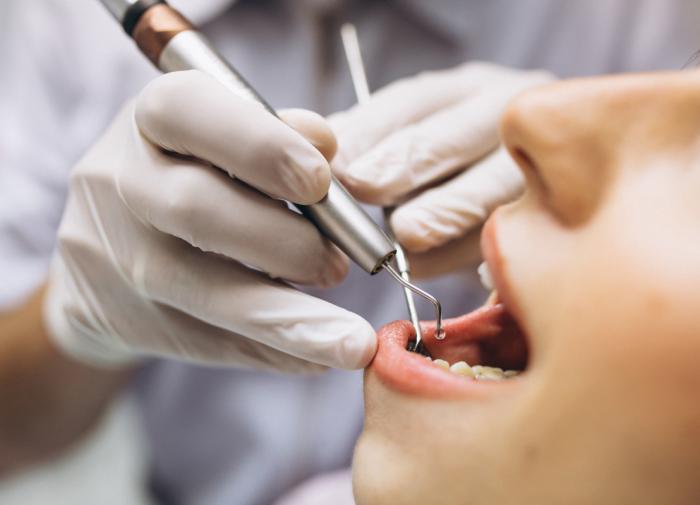Robots and dental health: what does the future hold?
Robots are increasingly making their way into medicine, and dentistry is no exception. A robot dentist recently performed its first fully automated surgery, showing promise for the future of medicine. According to the International Federation of Robotics, the robotics market has grown at a rate of 10-11% annually over the past five years, reflecting the expanding capabilities and accessibility of these technologies.

Photo: freepik.com by senivpetro, PDM
From the first step to the result.
Perceptive’s automated dental treatment process begins with a 3D scan of the oral cavity using optical coherence tomography (OCT). This method creates a detailed 3D model that clearly shows the teeth, gums, and even nerves. Using OCT eliminates harmful X-rays, as only light rays are used to build the model. The accuracy of caries detection reaches 90%.
How does the robot work?
Once the OCT is complete, the robot surgeon takes over further treatment. The AI system analyzes the scan results and develops a surgical plan. One of the key areas is preparing teeth for crowns. The usual procedure, which requires two visits and about two hours, is reduced to 15 minutes with the help of the robot. The robot also places fillings faster and more accurately than dentists, Perceptive representatives emphasize.
According to the company, the robot can operate safely even in difficult conditions, predictably responding to possible patient movements during the procedure. Tests conducted on people have shown positive results.
CEO of Perceptive, Chris Cirielloproudly noted: “Carrying out the world’s first fully automated dental procedure is a real breakthrough. Our solution improves access to healthcare, patient experience and treatment outcomes.”
Prospects for implementation
Dentist and Perceptive Advisory Board Member Karim Zaklamaa dentist and Perceptive advisory board member, added: “An AI-powered robotic system will change the way dentistry is done. We will be able to improve the patient experience by simplifying procedures and increasing their comfort. The latest imaging techniques allow us to diagnose problems earlier with greater accuracy, and the reduction in treatment time increases clinic throughput.”
Clarifications
Caries (lat. caries (decay) is a complex, slowly ongoing pathological process occurring in the hard tissues of the tooth and developing as a result of the complex impact of unfavorable external and internal factors. In the initial stage of development, caries is characterized by focal demineralization of the inorganic part of the enamel and the destruction of its organic matrix. Ultimately, this leads to the destruction of the hard tissues of the tooth with the formation of a cavity in the dentin, and in the absence of treatment – to the occurrence of inflammatory complications from the pulp and periodontium.
>
Health News
Join Pravda.Ru
Source link
https://muslimprofessionalsgh.org